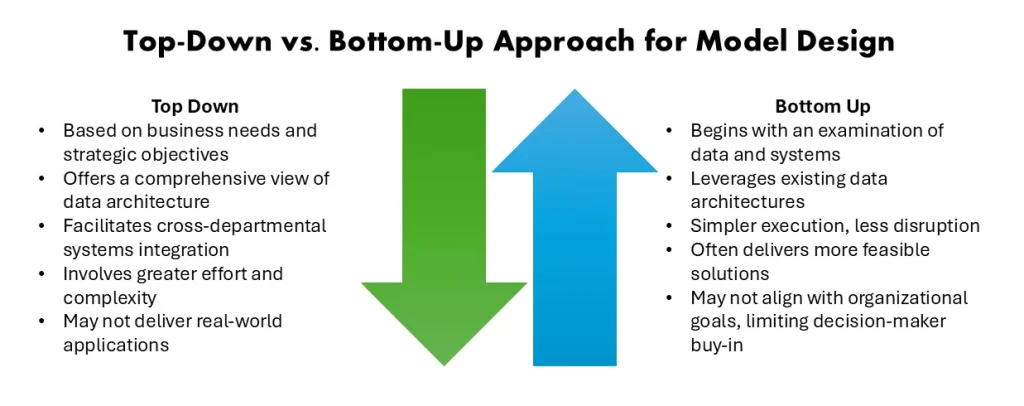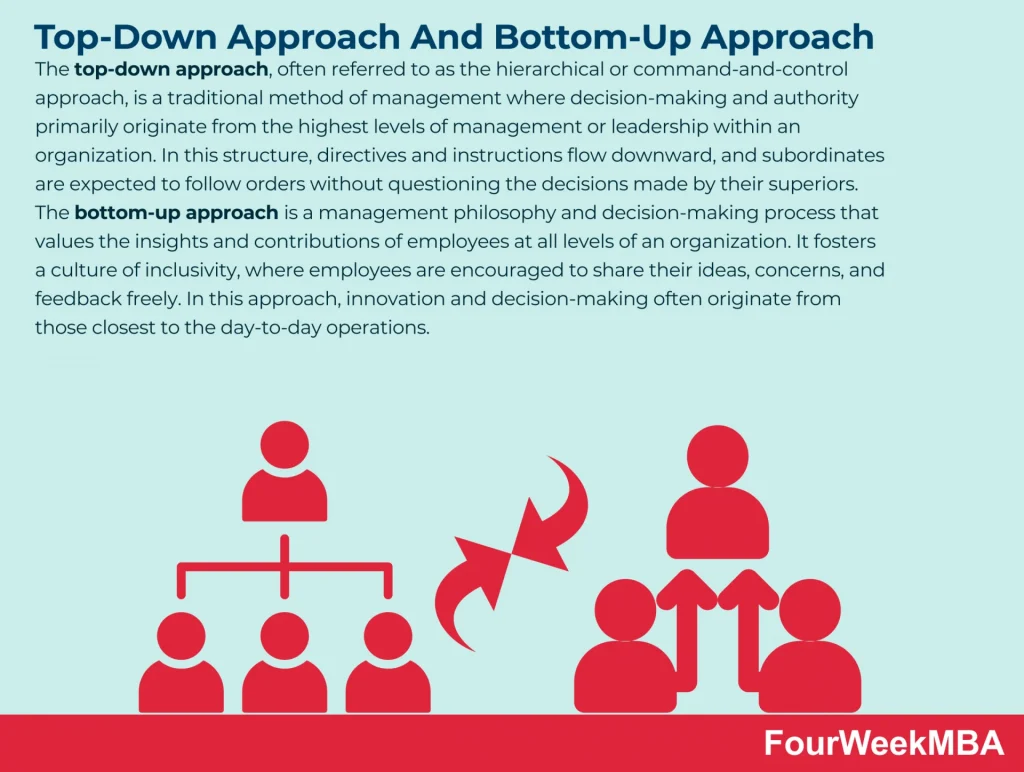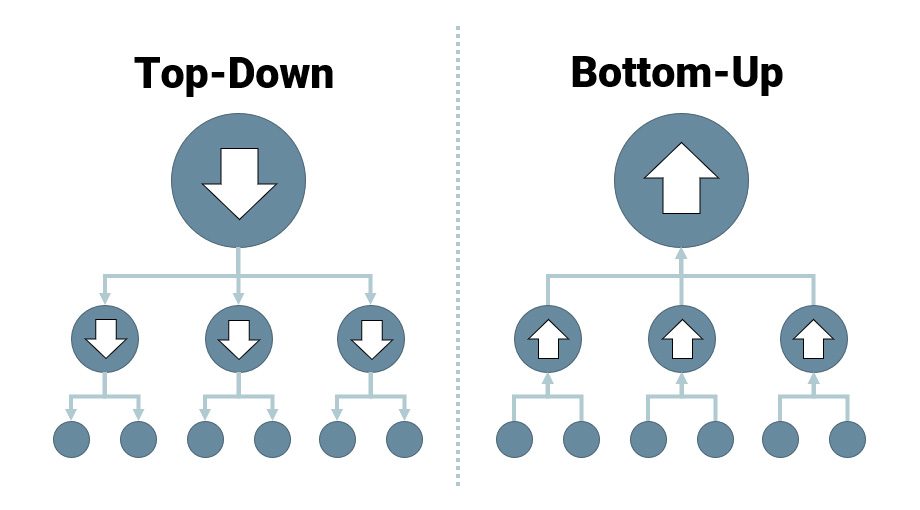
The inevitability of bottom-up organization across different parts of the world stems from its inherent strengths in system-maintenance, schooling, adaptive learning, and inclusivity, while also reflecting a deep historical precedent of cooperative networks. This approach, though sometimes slower in decision-making, leverages the collective intelligence and agency of individuals directly involved, leading to more resilient, relevant, and equitable outcomes.

System-Maintenance: Resilience and Adaptability
Bottom-up organization is crucial for robust system-maintenance due to its ability to foster flexibility, adaptability, and continuous improvement.
- Decentralized Decision-Making and Localized Solutions: In a bottom-up model, those closest to the operations or problems are empowered to make decisions. This allows for swift and relevant responses to challenges and opportunities, as insights come from the “field” rather than being dictated from above. For instance, in maintenance management, frontline operators can identify and address issues before they escalate, leading to more efficient repairs and reduced downtime. This decentralized approach ensures that maintenance strategies are practical and grounded in operational reality.
- Increased Engagement and Ownership: When individuals are involved in the decision-making process, they develop a sense of ownership and commitment. This leads to greater engagement and motivation, as people are more invested in the success of the system they helped create or maintain. In system maintenance, this translates to employees actively seeking to improve processes and report potential issues, as they feel heard and valued.
- Enhanced Adaptability and Risk Management: Bottom-up approaches allow for more flexible and iterative strategies. Continuous feedback from employees enables organizations to tailor plans in real-time, effectively managing uncertainties and risks. This is particularly valuable in dynamic environments where rigid top-down structures might struggle to respond quickly to changing conditions.

Schooling: Personalized and Relevant Education
In education, a bottom-up approach emphasizes learner-centered design, promoting inclusivity and relevance.
- Student and Teacher Agency: Bottom-up curriculum development involves active participation from teachers, students, and local communities. This ensures that the curriculum is relevant to the specific context and needs of the learners, allowing educators more autonomy in shaping content and structure. This can lead to more personalized instruction and resources, even within a consistent framework.
- Adaptive Learning Experiences: By incorporating feedback from students, bottom-up approaches facilitate adaptive learning. This means that learning materials and methods can be adjusted in real-time to address individual needs and gaps in knowledge, making learning more engaging and effective. For example, teachers can tailor lesson plans based on student comprehension and preferences, fostering deeper engagement.
- Fostering Creativity and Problem-Solving: When students and teachers are empowered to contribute ideas, creativity flourishes. This approach encourages critical thinking and problem-solving skills as learners are actively involved in their educational journey rather than passively receiving information.

Adaptive Learning: Agility and Innovation
Adaptive learning, inherently tied to bottom-up principles, is critical for continuous growth and evolution in any system.
- Leveraging Diverse Perspectives: A bottom-up approach to adaptive learning harnesses the collective insights and creativity of all organizational members. Those working on the front lines possess invaluable perspectives that, when aggregated, can lead to superior decision-making and innovative solutions. This is especially true in areas like product design or community programs, where local insights are paramount.
- Empowerment and Agility: Decentralized decision-making in adaptive learning environments means that responses to challenges and opportunities are swift and relevant. This agility is crucial in dynamic markets or rapidly evolving fields, allowing for quick iterations and course corrections.
- Continuous Improvement: By involving employees across all levels in identifying areas for improvement and contributing ideas, a bottom-up strategy fosters a culture of continuous learning and innovation. This ensures that the system or organization remains relevant and effective over time.
Inclusivity: Empowerment and Diversity
Bottom-up organization is fundamental to fostering genuine inclusivity, which in turn strengthens the entire system.
- Diverse Perspectives and Ideas: An inclusive bottom-up approach incorporates diverse perspectives and ideas from all levels of an organization or community. This enriches decision-making, leading to more comprehensive and equitable solutions. When everyone feels empowered to contribute, a wider range of experiences and insights are brought to bear on challenges.
- Fostering Ownership and Engagement: By actively involving individuals in shaping processes and decisions, a bottom-up approach fosters a sense of ownership and accountability. This increases engagement, satisfaction, and motivation, as people feel respected and valued for their contributions.
- Breaking Down Silos: Bottom-up communication styles encourage collaboration between different departments and levels, breaking down communication silos. This leads to a more cohesive and understanding environment where information flows freely, enhancing overall organizational health and effectiveness.
Historical Presence of Cooperative Networks
The presence of bottom-up cooperative networks is not a modern invention but rather a fundamental aspect of human societal organization throughout history.
- Ancient Communities and Tribes: From the earliest human societies, tribes and communities were often organized cooperatively. Resources were allocated, and tasks were divided based on mutual benefit and collective survival. This “grassroots” organization was essential for hunting, gathering, defense, and maintaining social cohesion.
- Medieval Guilds and Communes: In medieval Europe, guilds were bottom-up organizations of artisans and merchants who cooperated to regulate their trades, ensure quality, and provide mutual support. Communes were self-governing towns that emerged through the collective action of citizens seeking greater autonomy from feudal lords.
- Early Modern Cooperatives: The modern cooperative movement has roots in the 18th and 19th centuries, with examples like the Fenwick Weavers’ Society (1761) and the Rochdale Society of Equitable Pioneers (1844). These groups formed from the bottom up to address economic inequalities and provide essential goods and services to their members at fair prices, embodying principles of democratic control and self-help.
- Indigenous Communities Worldwide: Many indigenous cultures around the world have historically operated on principles of collective ownership, shared resources, and consensual decision-making, demonstrating long-standing traditions of bottom-up governance and community-driven initiatives.
- Grassroots Movements: Throughout history, social and political change has often been driven by grassroots movements – bottom-up efforts where ordinary citizens organize to advocate for their rights, challenge injustice, or demand reforms. These movements exemplify the power of cooperative networks to effect significant change.
In conclusion, the inevitability of bottom-up organization lies in its profound ability to leverage human agency, foster adaptation, and cultivate inclusivity. It is not merely a management style but a deeply ingrained pattern of human cooperation that has manifested across diverse cultures and historical periods, demonstrating its enduring effectiveness in building resilient, equitable, and continuously evolving systems.
